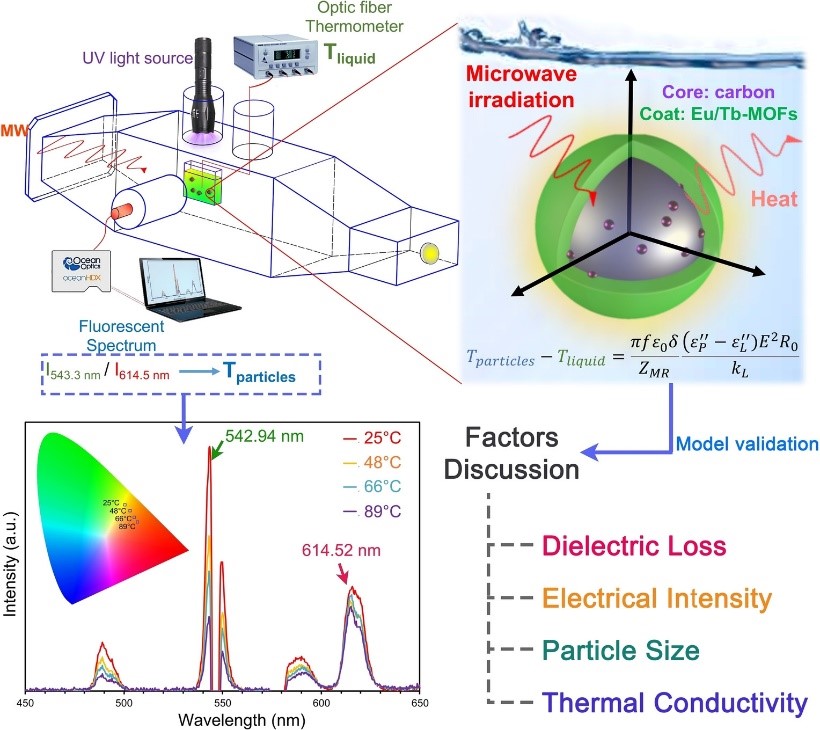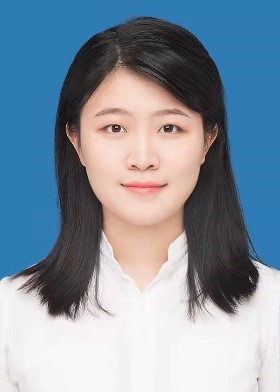Recently, Professor Gao Xin and Professor Li Hong from the School of Chemical Engineering and Technology published a research article entitled “Watching Microwave-Induced Microscopic Hot Spots via the Thermosensitive Fluorescence of Eu/Tb Mixed Metal Organic Complexes” in Angewandte Chemie International Edition (https://onlinelibrary.wiley.com/doi/10.1002/anie.202114340). Ph.D. candidate Zhao Zhenyu and Master candidate Shen Xi were co-first authors.

Under alternating electromagnetic field, the realigning of electric dipoles/charges in microwave-absorbing particles rapidly converts the absorbed electromagnetic energy into heat through the mechanisms of dipole rotation and charge motion, leading to the formation of high-temperature domains at microscopic scale (micro hot spots). The selective heating characteristic can not only accelerate the rates of catalytic reactions due to the elevated temperature at the surface of catalysts, but also enable the fabrication of nanostructures with special morphologies as it can provide unique environments for crystalline nucleation and growth.

Up to date, it is still a challenge to obtain the actual temperature in microwave field, which is also the focus of the debate on whether there exists “non-thermal effect” of microwave irradiation. Although the temperature measurement can be achieved at macro scale by employing fiber optic techniques, the phenomenon of microwave-induced hot spots at micro scale has never been directly and quantitatively detected.
In the research article, the authors proposed a microwave-irradiated energy transfer model to predict the formation of microwave-induced hot spots based on the theory of transfer phenomenon. In order to confirm the model results, they presented a novel approach to quantitatively determine the intrinsic temperature at the surface of microwave-absorbing particles, where these particles were coated with a Eu/Tb bimetallic mixed metal organic complexes, whose temperature-sensitive fluorescent spectra can be used to monitor the temperature of wrapped particles. Subsequently, they discussed the influence of the dielectric property of particles, the thermodynamic properties of solvents as well as the microwave field intensity on the extent of the temperature gradient between solid particles and bulk liquid. This fundamental study can enable precise optimization and control of operating conditions in microwave-assisted synthesis and microwave-responsive techniques.

Prof. Gao Xin and Prof. Li Hong led a research group and mainly focuses on research about the process intensification of traditional chemical engineering by designing high-efficient column internals, developing reactive distillation techniques and employing external fields (e.g. light, microwave, etc.).

The author Zhao Zhenyu studied Chemical Engineering in Tianjin University, where he earned his Bachelor’s degree. Since 2017, he has been a Ph.D. student in the group of Prof. Gao Xin and Prof. Li Hong, focusing on the fundamental research on the selective heating characteristic of microwave irradiation and its applications in material fabrications, catalytic reactions and chemical separations.

The author Shen Xi earned her Bachelor’s degree of engineering from Northeast Forestry University in 2019. Since then, she has been a master student at Tianjin University supervised by Prof. Li Hong and Prof. Gao Xin. Her research interest is the employment of temperature-responsive materials to achieve temperature measurement in the microwave field.
By: School of Chemical Engineering and Technology
Editor: Qin Mian






